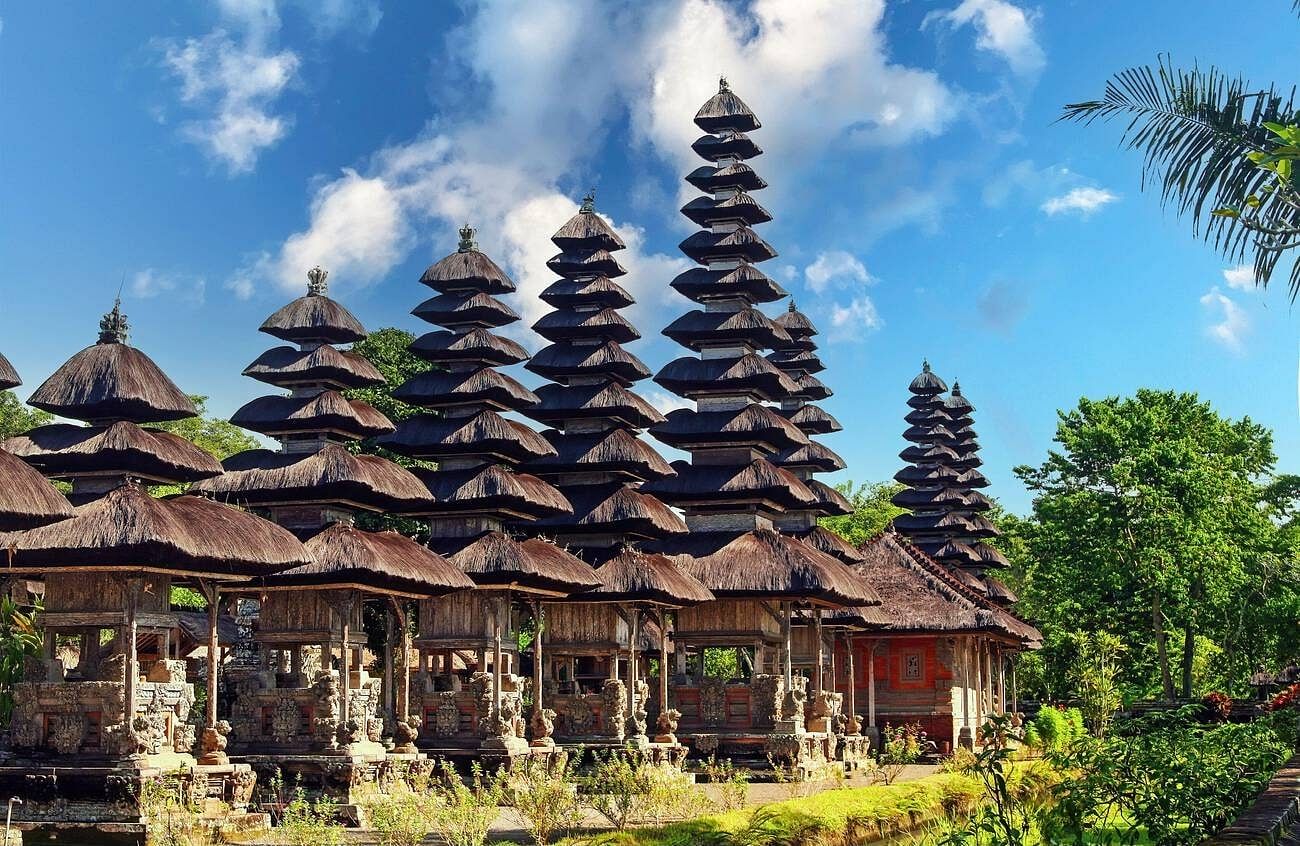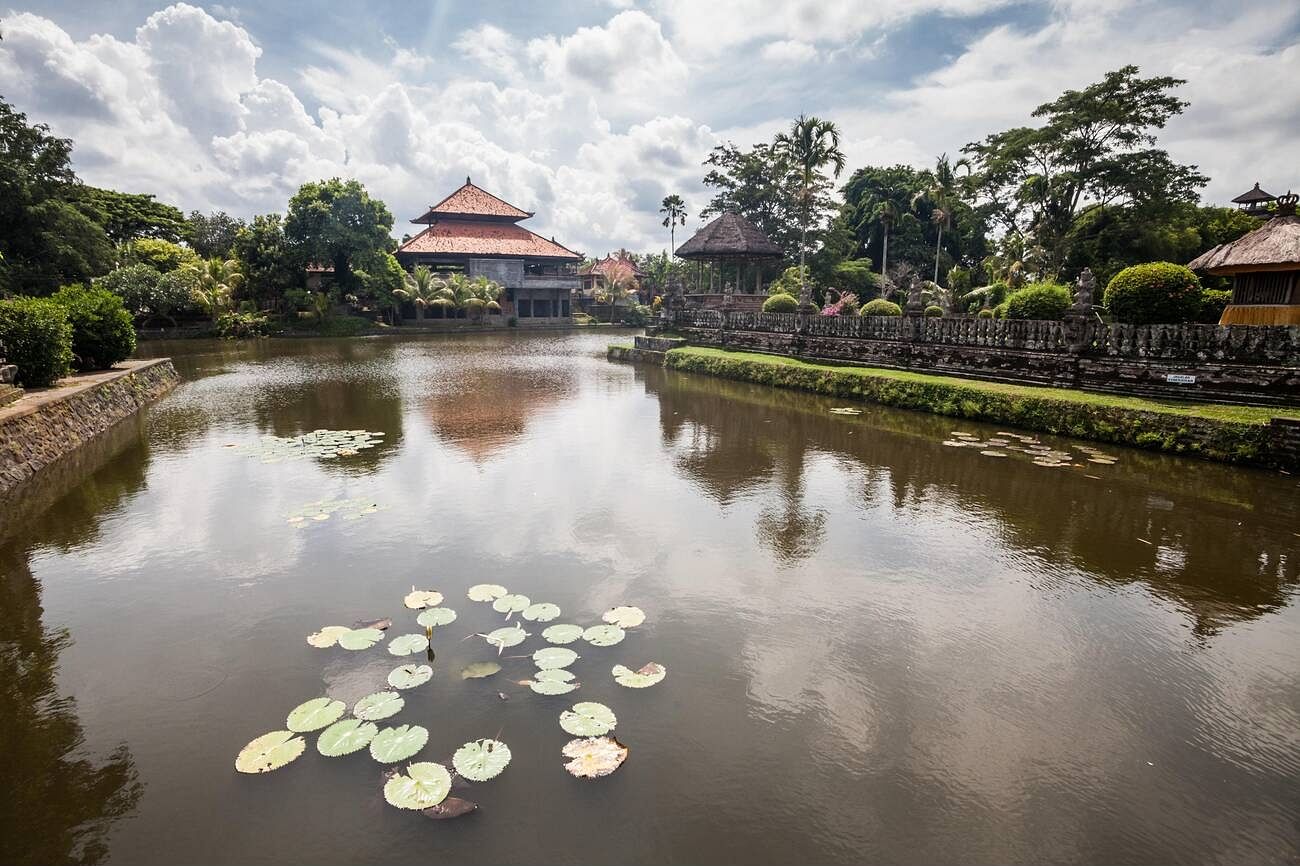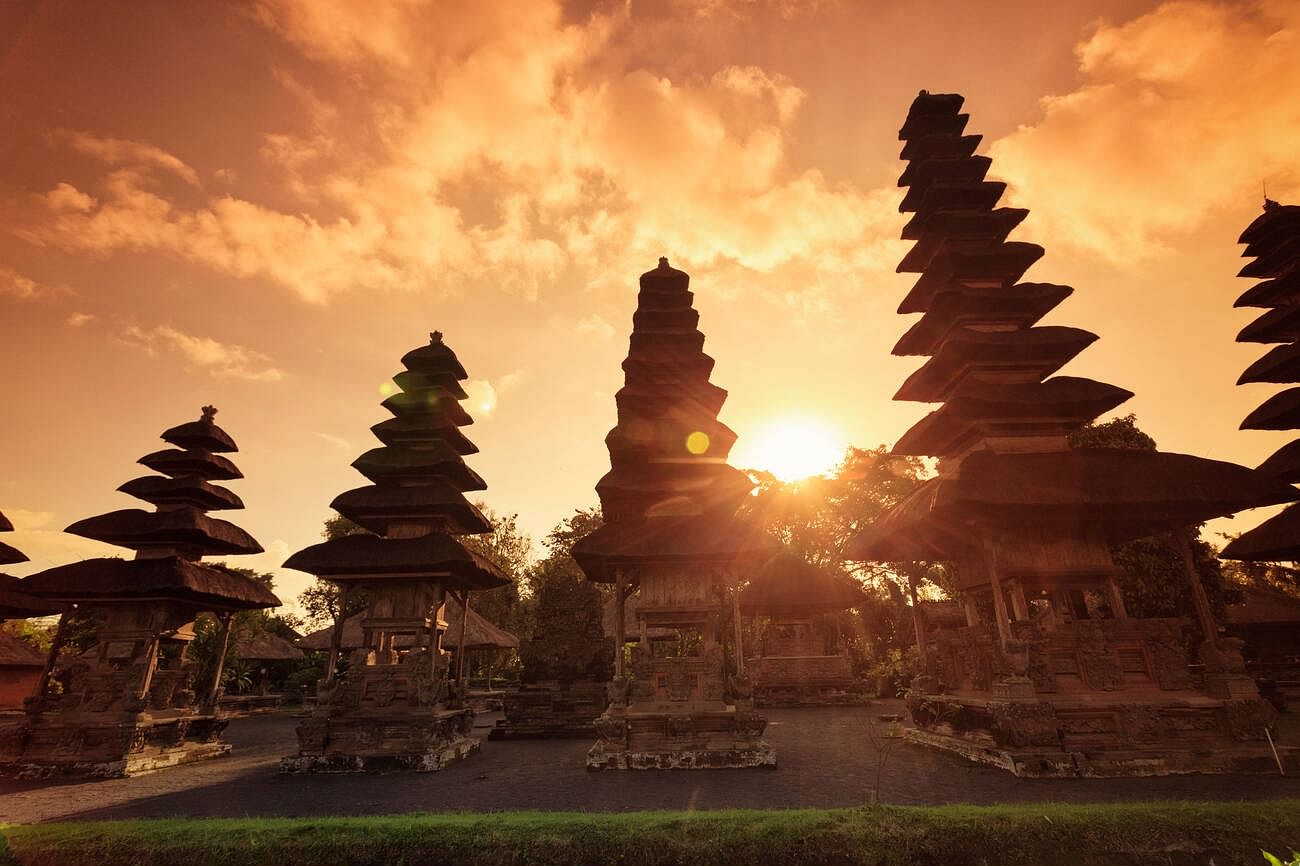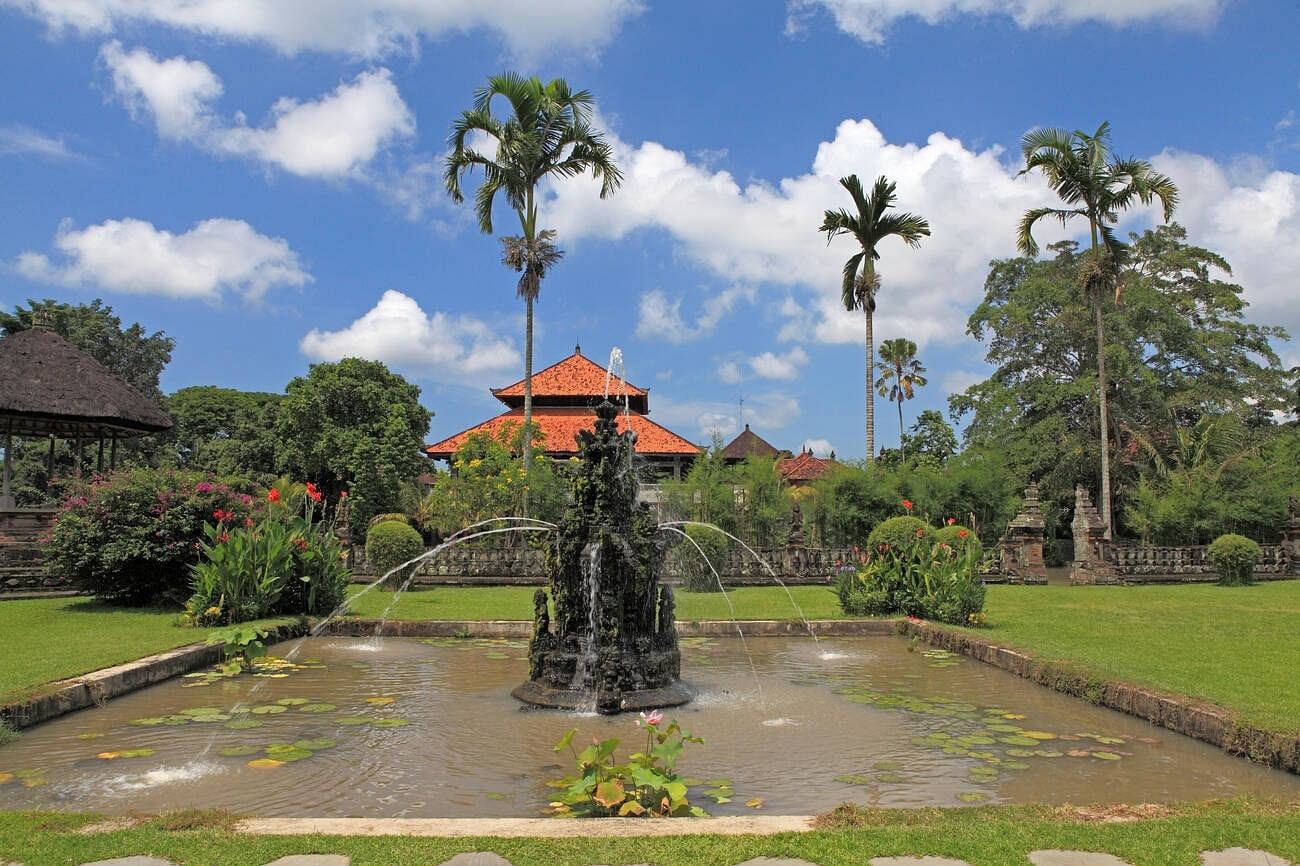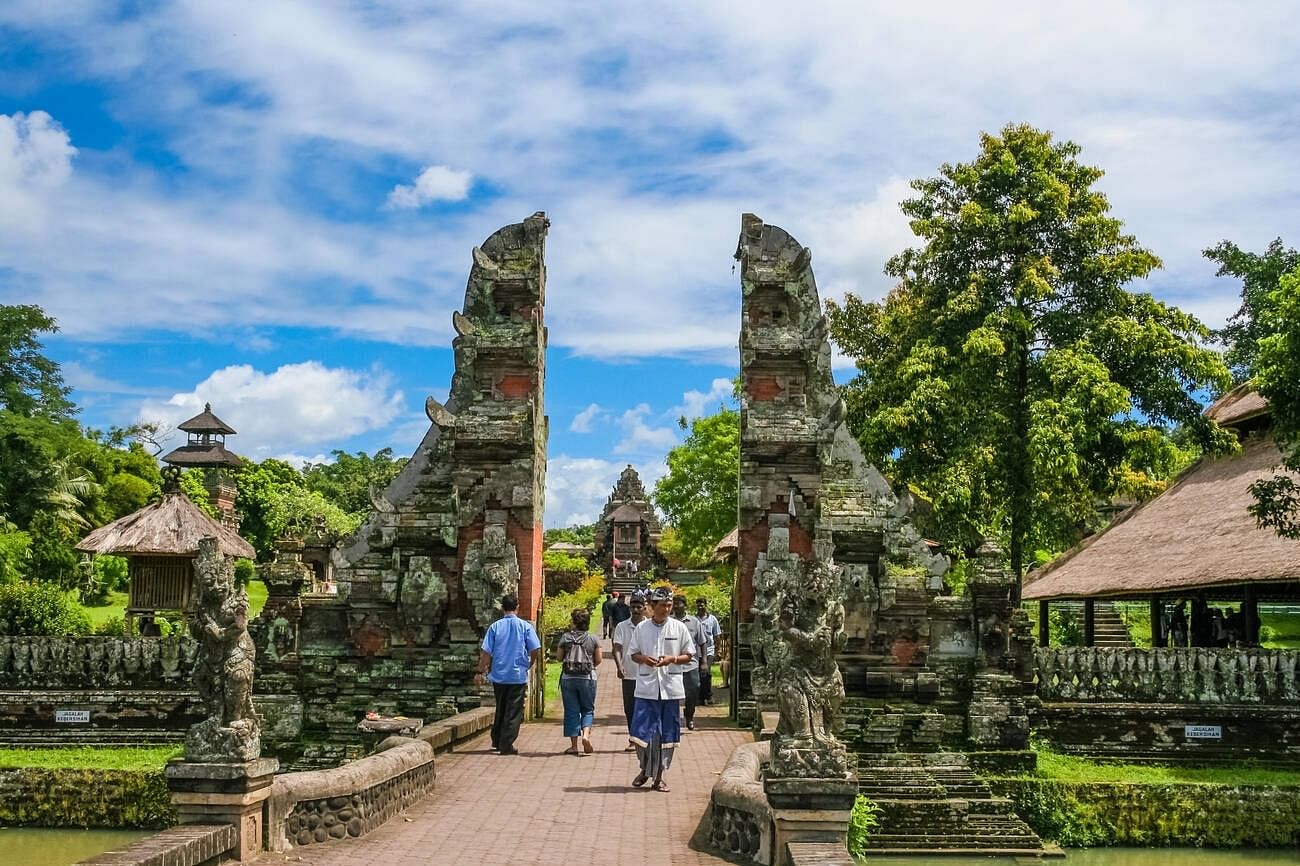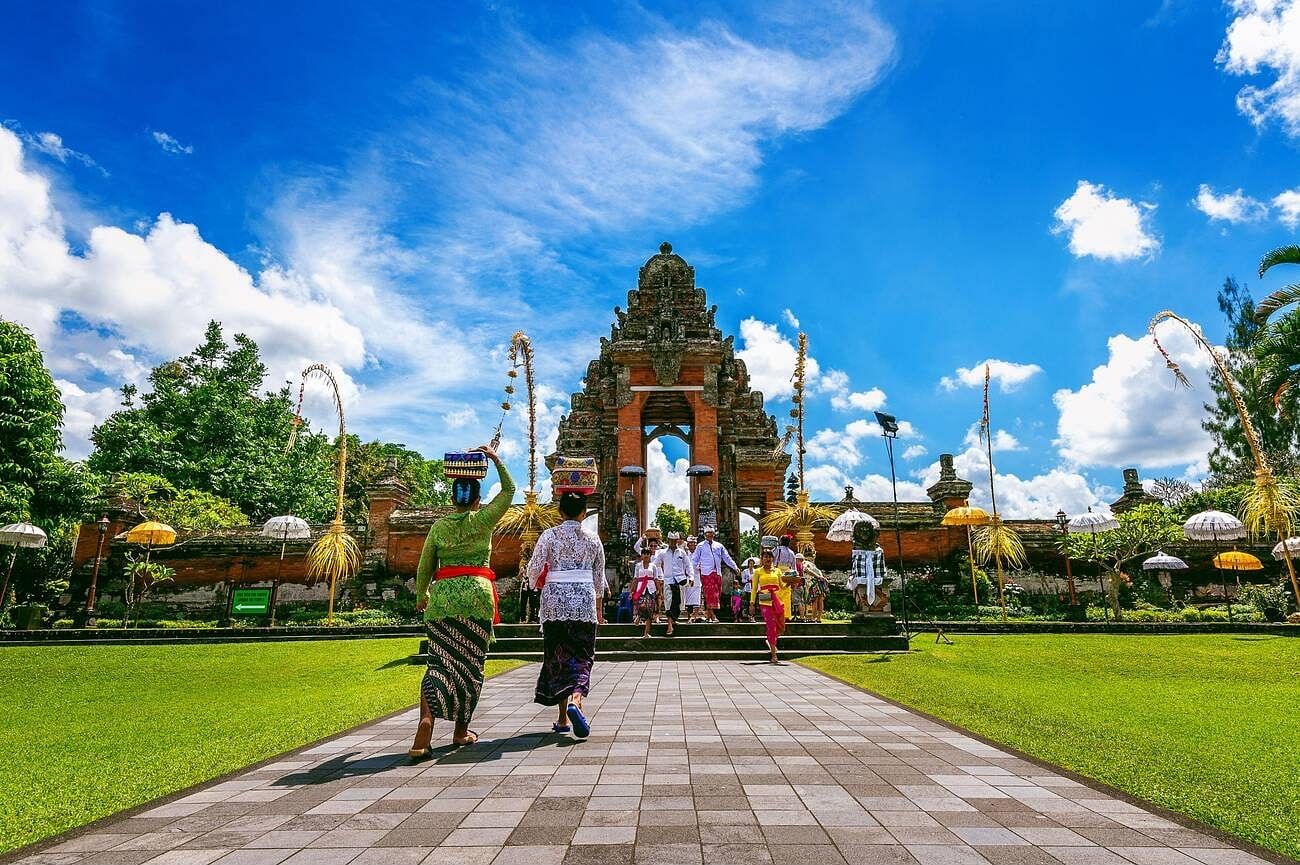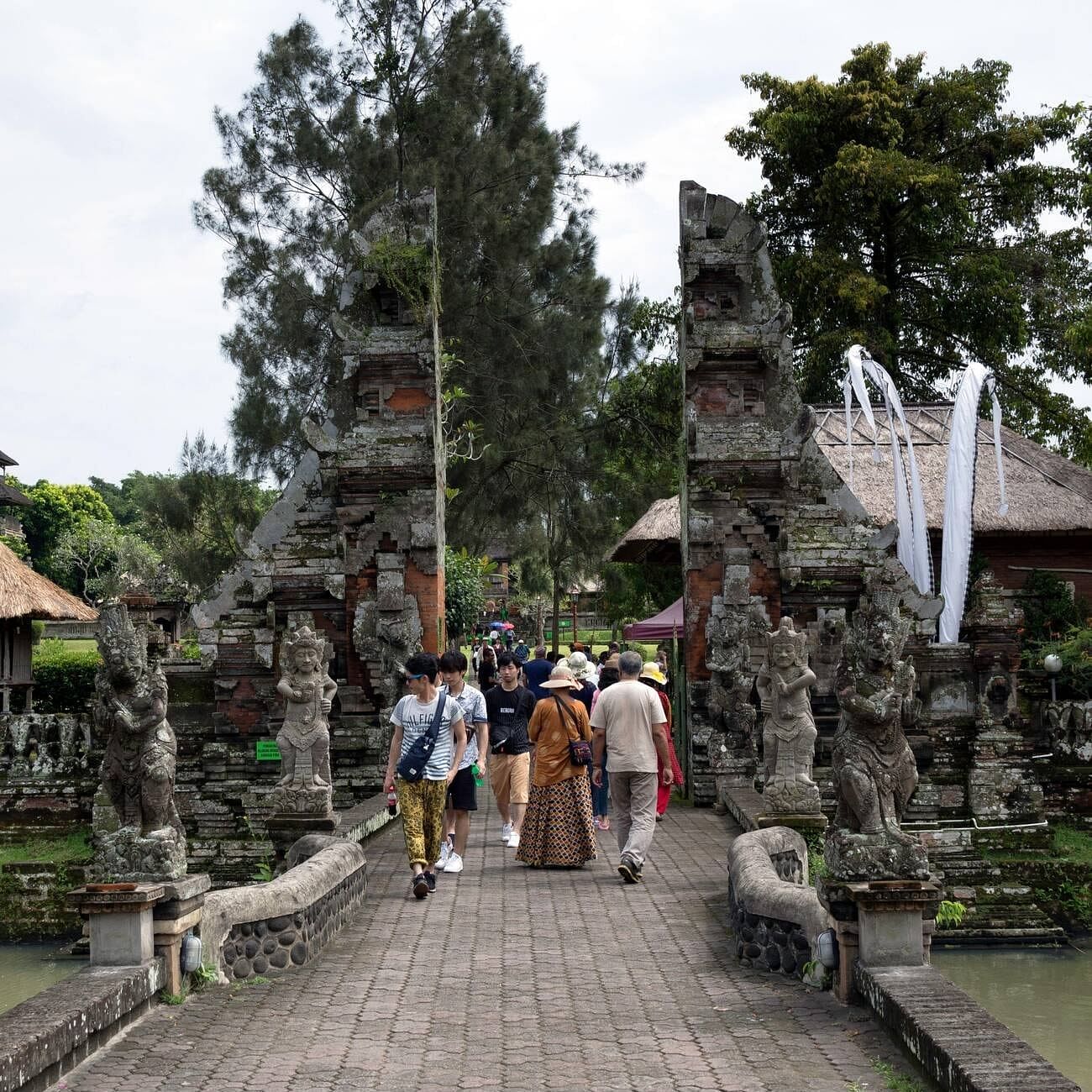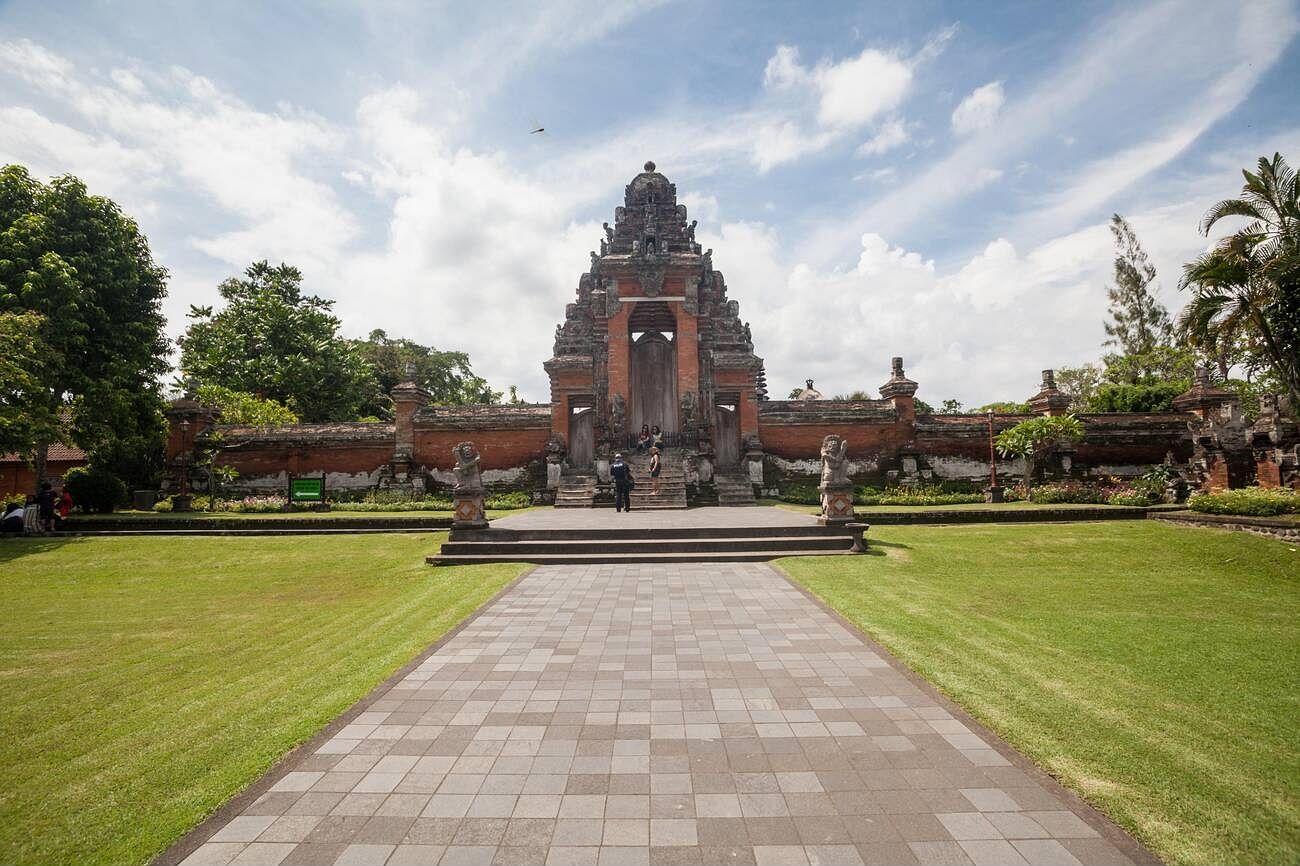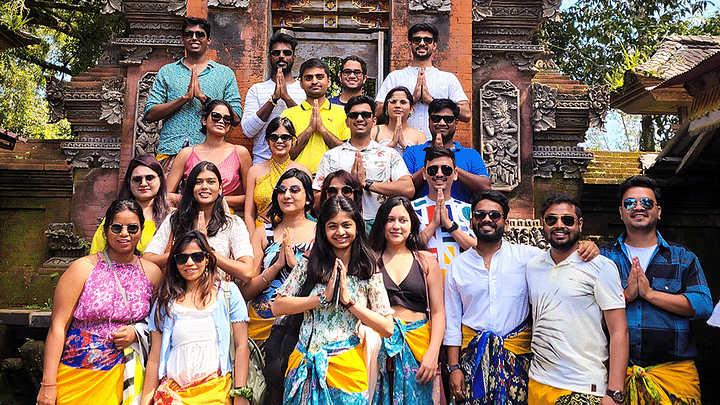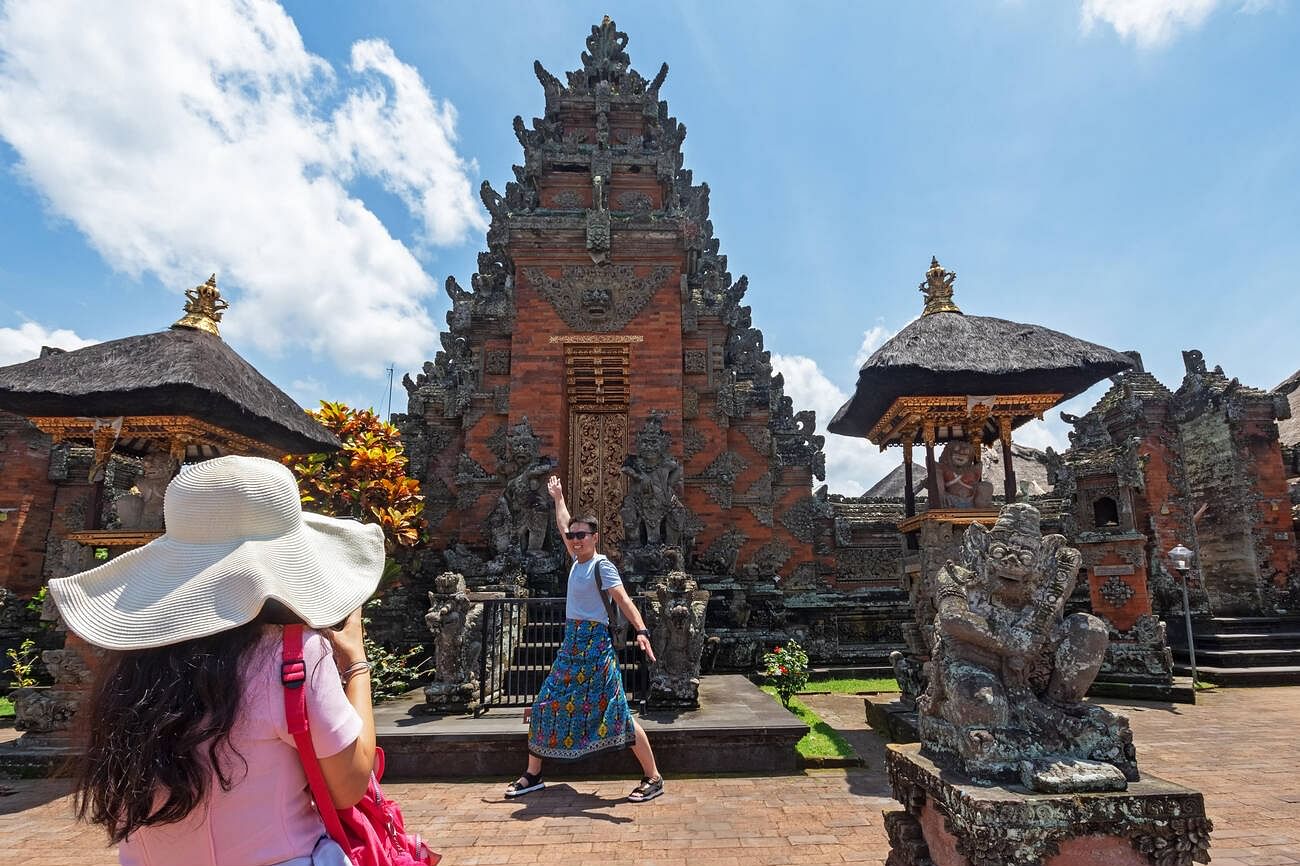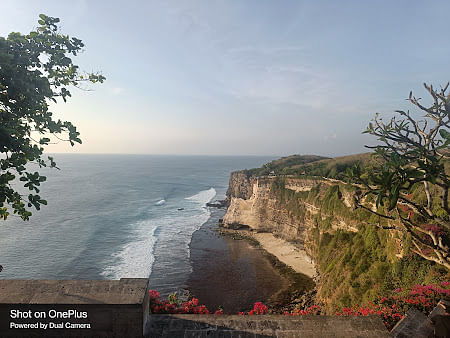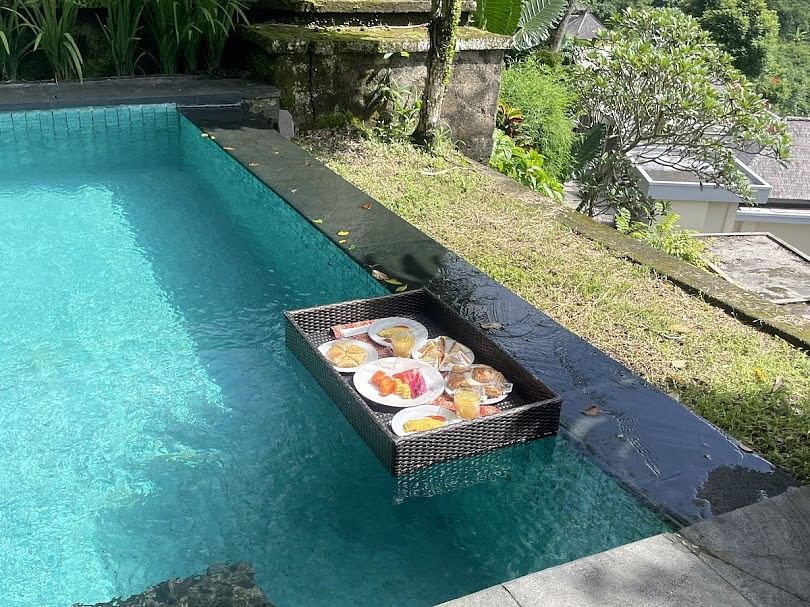Pura Taman Ayun Temple is one of Bali's most beautiful royal sanctuaries. This stunning temple was once the heart of the Mengwi Kingdom and remains deeply important to the Balinese people today. If you're planning a Bali Trip , this architectural gem absolutely deserves a spot on your itinerary.
The temple's name means "Garden Temple in the Water," and once you see it, you'll understand why. The entire complex is surrounded by a large pond filled with fish, creating the illusion that the temple is floating on water. It's a truly magical sight.
What makes Pura Taman Ayun special is its stunning traditional Balinese architecture. The temple features beautiful multi-tiered shrines and peaceful courtyards that showcase the island's ancient building style. Whether you're interested in history, spirituality, or simply want to experience Bali's beauty, this temple is a must-visit.
Discover Pura Taman Ayun Temple in Bali history, cultural significance, and more below!
Taman Ayun Temple Bali - Visitor Info
- Pura Taman Ayun Temple in Bali Tickets:
- Adults: ₹160 per person (IDR 30,000)
- Children: ₹80 per person (IDR 15,000)
- Parking Fee:
- Car: ₹30 (IDR 5,000) per vehicle
- Bike: ₹11 (IDR 2,000) per vehicle
- Facilities: Parking, Toilets, & Food stalls
- Dress Code: Sarong and sash mandatory(included in the entrance fee)
- Opening Hours: 8 am to 6:15 pm
- Location: Jl. Ayodya No.10, Mengwi, Kec. Mengwi, Kabupaten Badung, Bali 80351, Indonesia
our best selling bali tour packages
Pura Taman Ayun Temple in Bali History
A King's Two-Year Dream
King Tjokerda Sakti Blambangan had a vision in 1632. Within just two years, he created something extraordinary, a temple that would change the spiritual landscape of Mengwi forever!
What makes Pura Taman Ayun Temple stand out in Bali history isn't just its age. It's the way it blends tradition with unexpected influences. You'll notice Chinese touches in its design, something quite rare for Balinese temples.
The multi-tiered towers that pierce the sky are not just beautiful, they're prayers in architectural form, honoring the royal ancestors who once ruled these lands.
More Than a Royal Chapel
For generations, this was more than the Mengwi royal family's private sanctuary. It solved a practical problem: Why should villagers trek for hours to distant temples like Besakih or Batukaru when they could worship closer to home? Taman Ayun became their spiritual hub, bringing the community together under one sacred roof.
The temple nearly faded in 1937, when it was repaired and renewed. The significance of Taman Ayun Temple reached new heights when UNESCO declared it a World Heritage Site in 2012.
Even today, visitors experience the significance of the temple as they walk through its gates and experience the connection to Bali’s royal past.
Pura Taman Ayun Temple Bali Architecture
Like most Balinese temples, Pura Taman Ayun follows the Tri Mandala concept, an ancient design dividing the temple into three sacred zones. The temple is surrounded by a pond, accessible by a bridge guarded by two stone protectors keeping negative energy away.
The Outer Courtyard hosts community gatherings in traditional pavilions. A lotus pond with a nine-directional fountain adds beauty.
The Middle Courtyard is on higher ground, accessed through gates carved with nine wind gods. The iconic Kulkul tower stands here as a favorite photo spot with its intricate Balinese brickwork.
The Inner Sanctum is the holiest zone. Multi-tiered shrines honor deified ancestors, their towers reaching skyward. Each level brings you closer to the divine, creating a symbolic journey from the everyday world to sacred ground. This ascending layout makes Pura Taman Ayun architecturally unique among Bali's temples.
Best Things to Do At Taman Ayun Temple Bali
Let’s explore the best things to do in Bali’s Taman Ayun Temple:
- Admire the Architecture: Admire Balinese craftsmanship through Taman Ayun’s detailed carvings dedicated to Hindu deities. Each structure stands as a testament to the architectural brilliance of ancient Balinese builders.
- Visit Peaceful Lotus Pond: The serene lotus pond creates a mirror-like surface that reflects the temple. Visitors often find themselves admiring the lotuses at the pond and taking in the atmosphere.
- Experience Traditional Ceremonies: If you’re lucky, you can witness traditional Balinese ceremonies representing the significance of Taman Ayun Temple. Devotees in traditional dress perform age-old rituals, creating an atmosphere of spirituality.
- Try Photography: Let your lens capture the essence of Pura Taman Ayun Temple in Bali. While photography is welcome throughout most areas, remember to be respectful of ongoing ceremonies and avoid using flash near the shrines.
Best Time to Visit Taman Ayun Temple Bali
The best time to visit Bali’s Taman Ayun depends on various factors:
Dry Season(April to October)
- Temperature: Range from 30°C to 32°C (86-89°F), while nights cool down to 21-23°C (70-73°F).
- Weather: Sunny with minimal rain
- Pros:
- Perfect for photography and outdoor exploration
- Easy to walk around the gardens
- Cons:
- More tourists during peak months, especially at midday. And higher accommodation prices.
- Expect hotter midday temperatures
Wet Season(November to March)
- Temperature: Fairly consistent at around 26-27°C (79-81°F)
- Weather: Afternoon rain showers are common
- Pros:
- Magical, lush green backdrop for photos
- Fewer crowds for peaceful visits
- Lower accommodation prices
- Cons:
- Unpredictable rain(need an umbrella and waterproof shoes)
- Some paths may be muddy and uncomfortable
Pro Tip: Though Pura Taman Ayun Temple in Bali opening hours are 8 am to 6:15 pm, visit early morning (around 8 AM) or late afternoon (after 3 PM) to avoid heat and crowds.
How to Reach Taman Ayun Temple Bali?
If you’re wondering how to reach Bali’s Taman Ayun Temple, it is easily accessible and is located on the main road, in the area beside the major roadway between Denpasar to Singaraja. Explore different transport modes to reach the temple below:
How to Reach Taman Ayun Temple by Flight
- Fly to Ngurah Rai International Airport (Denpasar), Bali's main airport.
- From there, Taman Ayun Temple is 30 km, and takes 1 to 1.5 hours to reach.
- It would take around 1.5 hours from Kuta, or the Seminyak area, and 45 minutes from Ubud.
- You need to use ground transportation, like hiring a private driver or using ride-hailing apps, to reach the temple.
How to Reach Taman Ayun Temple by Hiring a Car With a Driver
- Hiring a car with a driver is one of the best ways to commute in Bali.
- This option is perfect for families or groups wanting comfort and convenience.
- The best part? An English-speaking driver will share local insights on your way to the temple.
- Cost: Around ₹3,000-₹4,200 (IDR 550,000-750,000) per day
How to Reach Taman Ayun Temple by Private Tour Package
- Opting for private tours is one of the most popular ways to explore Bali’s attractions.
- These tours typically handle all transportation, accommodation, entry fees, and sometimes meals.
- Best part? You can also customize the Bali trip as per your preferences.
- WanderOn Cost: Starts from ₹42,999/- for 4 to 5 days.
our top customized bali trips
How to Reach Taman Ayun Temple by Ride-Hailing Apps Grab/Gojek
- Ride-hailing apps like Grab or Gojek are best for solo travelers or couples on a budget.
- You can book them from either hotel, airport, or anywhere in Bali.
- Cost from Denpasar: Between ₹1,100-₹1,300 (IDR 200,000) one-way
- Cost from Nearby Hotels: Between ₹280-₹560 (IDR 50,000-100,000) one-way
How to Reach Taman Ayun Temple by Renting a Car/ Bike
- Renting a bike/car is the best for experienced riders/drivers who want complete freedom.
- Carry an International Driver’s License and a valid passport strictly.
- Be aware of Bali’s narrow roads and traffic.
- Scooter Rental Cost: Between ₹200-₹700 per day (IDR 35,000-200,000)
- Car Rental Cost: Between ₹1,500-₹3,000 per day (IDR 300,000-550,000)
How to Reach Taman Ayun Temple by Bus
- You can take the Trans Sarbagita bus from Ubung station to Mengwi bus station for ₹40 (IDR 7,000) per person.
- However, public buses run on infrequent schedules and aren't very tourist-friendly since there are no English signs.
- You'll likely need to make transfers, making the journey quite time-consuming.
- That's why most visitors prefer Grab/Gojek or private drivers for temple visits instead.
Essential Tips for Visiting Taman Ayun Temple in Bali
Explore the travel tips for Taman Ayun Temple in Bali for an unforgettable experience.
- Follow Taman Ayun Temple Dress Code: Visitors are required to dress respectfully, with shoulders and knees covered. Traditional sarongs are available at the entrance, ensuring all guests meet the proper dress standards.
- Respect Temple Protocol: Remember the Taman Ayun Temple history and show respect for ongoing ceremonies.
- Stick to Photography Guidelines: The temple permits photography throughout most areas, with certain restrictions. Flash photography is not allowed inside shrines, and photographers must maintain a respectful distance from worshippers.
- Carry Essentials: Ensure you have good walking footwear and sun protection, and stay hydrated for a comfortable experience.
Is Visiting Taman Ayun Temple Worthy?
Absolutely! Pura Taman Ayun Temple is an example of architectural brilliance and spiritual heritage. This royal temple, surrounded by tranquil waters and lush gardens, continues to captivate visitors.
From its humble beginnings as the Mengwi royal family temple to its current status as a UNESCO World Heritage Site, it has maintained its cultural importance through the centuries.
The temple is easily accessible with reasonable entrance fees, offering ample time for exploration during early morning and evening visits. Whether you're admiring the intricate carvings of the three-tiered Merus, finding peaceful moments by the lotus pond, or witnessing traditional ceremonies, it offers a genuine glimpse into Bali's rich heritage.
Overall, Taman Ayun Temple promises both spirituality and tranquility, making it an essential destination for any Bali itinerary.





